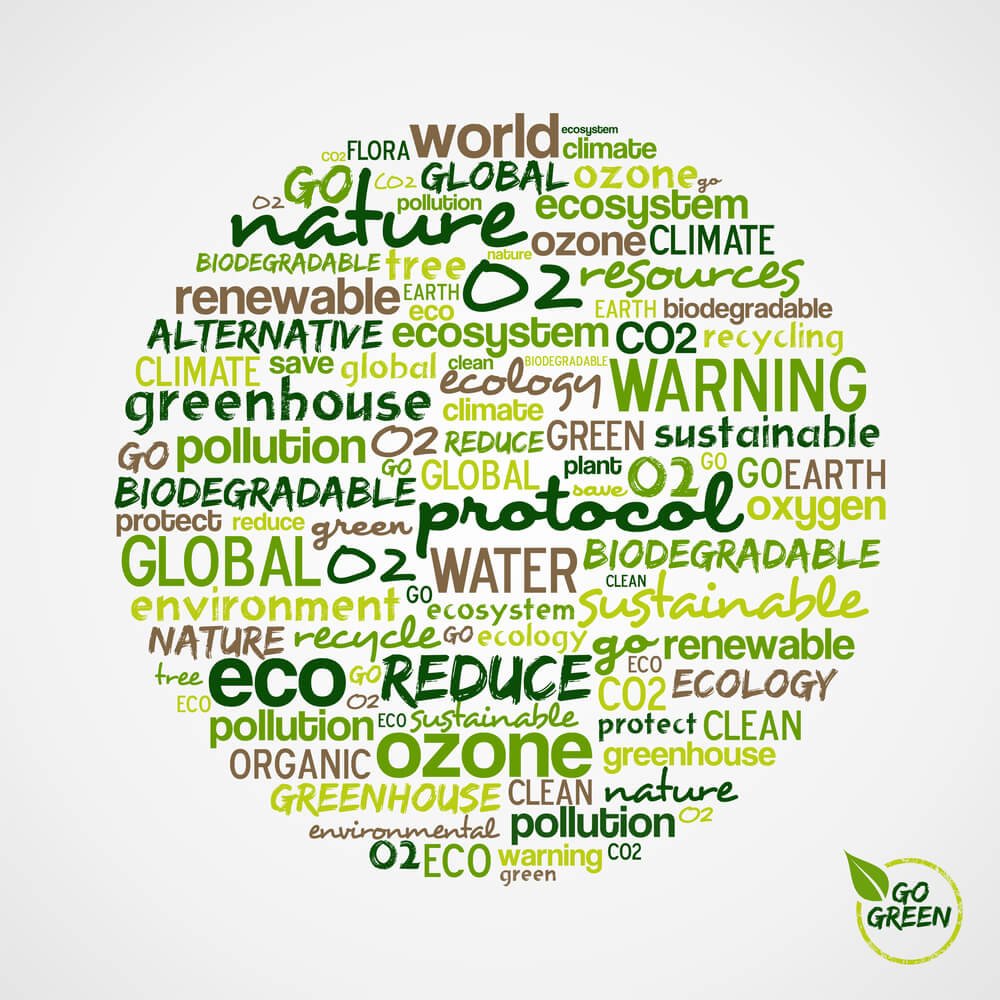Becoming eco-conscious is definitely a learning curve, and one of the most important things to learn is if what you purchase is reasonably biodegradable.
In order for a product to be biodegradable, it has to be able to break down into its basic components and blend back into the earth.
This natural process should only require conditions such as the presence of microorganisms, fungi, or bacteria.
Biodegradable products matter because they make our environment healthier, by creating less pollution.
Technically, almost everything will break down eventually, but it may take thousands of years.
However, biodegradable products are those that quickly decompose into natural materials, typically between six and nine months.
An example of a biodegradable product is one which is plant-based; this kind of product, if left to its own devices, would eventually (and pretty quickly) break down into its natural elements like carbon dioxide, water, and other minerals, seamlessly blending back into the earth and leaving little to no toxins behind.
This is an ideal biodegradable product, but sometimes, even with products labeled as biodegradable, there is the chance that trace elements and harmful chemicals will still be left in the soil.
Thus, the degree of biodegradability of a product or material is important to consider, but can be difficult to tell because products may not always label themselves correctly.
It’s important to know the best and most ideal biodegradable products are those which break down quickly and that leave nothing behind.
If we want to be true to our commitment to lessen our environmental impact, we need to recognize how biodegradable a product is.
Read on for some tips on how to spot these signs!
Tip 1: Check for Naturally Occurring Materials
There are some things that are universally and ideally biodegradable.
This includes leftover food and untreated wood that has not been touched with paint, varnish, or anti-pesticides.
Other products made of naturally occurring elements, such as paper, biodegrade very easily.
Thus, a sign that a product you have is ideally biodegradable is if it is a.) a food product or b.) an untreated and natural element product such as wood or paper.
Tip 2: Is it Biodegradable or Compostable?
Many organic products will also label themselves as “compostable.” There is a difference between compostable and biodegradable.
Compostable products are biodegradable and with the right environment, the products will leave behind a nutrient-rich material called humus.
This material is then used to create a healthy environment for plants and produce growth.
If a product is labeled as “compostable,” it’s important to know that in order to facilitate this process, a composting environment will be needed.
Composting requires three basic variables: browns (dead leaves, branches, and other foliage), greens (vegetable waster, grass clippings), and water.
In sum, the difference between a biodegradable product and a compostable product is that a biodegradable product will break down into natural elements, and a compostable product will, in the right conditions, break down into natural elements that can then be used for growing natural produce.
Tip 3. Ignore “Greenwashing”
It’s easy to be fooled into thinking a product is biodegradable when it isn’t.
Many companies “greenwash” their products by making a product look as if it’s eco-friendly by using earth-toned packaging and colors or earth-friendly imagery (like a couple hiking).
Instead of taking a product at face-value, do a quick Google search on the company and their website.
Things to look for include: specific claims regarding the biodegradability of their products; official labels or certifications declaring how biodegradable their products are; and reviews of the company’s products.
These are all ways to really find out whether or not a product you have or may be considering purchasing is as earth-friendly as it appears.
Tip 4. Check for a Biodegradable Label and What the Product is Made Of
The last tip is to simply look for a label on the product that marks it as biodegradable.
However, don’t just trust the label – is the product itself seemingly made of biodegradable material? Remember, biodegradable material is typically already found naturally on the earth, is non-toxic or harmful to the environment, and can be completely absorbed back into the earth within six months to a year.
Things like paper products, bio-plastics (plastics made from cornstarch, vegetable oil, and other plant-based materials), food waste, and materials made from natural fibers.
Tip 5. Verify the Labeling
Another way to see if a product is legitimately biodegradable is to check third party websites and reviews of the company from which you are buying a product.
Many eco-activist websites verify whether a company is actually eco-conscious and friendly like they say they are, and their reviews of company practices and products can come in handy when figuring out whether or not a product is biodegradable.
Way to Do Your Part!
These five tips can help you figure out not just whether or not something is biodegradable, but also the degree to which it is.
You can do this by checking the labeling and material from which the product is made; checking for compostability; ignoring greenwashing; looking for a biodegradable label and checking the materials of the product; and verifying with eco-conscious websites the validity of a company’s biodegradability claims;.
By doing these things, you can help to reduce waste and create a healthier environment for us all!



